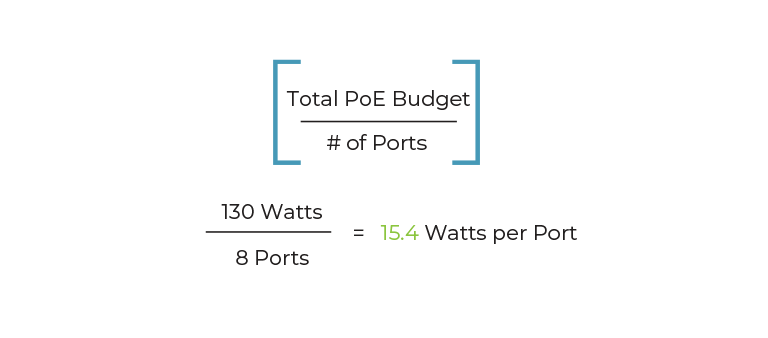- SOLUTIONS
- PRODUCTS
- SERVICES
- PARTNERS
- RESOURCES
Maximizing Efficiency: Unlocking the Benefits of Power Over Ethernet

Starview Technologies Earns ISO 9001 and ISO 45001 Certifications

Starview Technologies Achieves bizSAFE Level Star Certification
Maximizing Efficiency: Unlocking the Benefits of Power Over Ethernet
What is Power over Ethernet?
Power over Ethernet, or PoE, is a method of providing both power and ethernet data to a device via standard RJ45 ethernet cables. It is perfect for powering devices such as IP cameras, wireless access points, intercom systems, keyless entry devices, IP clocks, POE lightings etc. Over the years, POE has become so popular that more devices require higher power to operate.

PoE devices can be power sourcing equipment (PSE), powered devices (PDs), or both. The device that transmits power is the PSE, while the device that receives power is a PD. Most PSEs are either network switches or PoE injectors intended for use with non-PoE devices.
The earliest standard was 802.3af, which provided 15.4 watts of power over standard ethernet cables. This standard was followed with 802.3at, or PoE+, which provided higher power of 30.8 watts. While both standards are still used today, 802.3bt, or PoE++, can now deliver up to 60 watts (Type 3) or 95 watts (Type 4). The latest standard provides support for 10Gbps networks. PoE standards also include protections for overload and underpower of devices.

Why choose Power over Ethernet?
Power over Ethernet devices is a common technology with many use cases and applications. PoE makes cable management and connectivity simpler, and there is no special skill needed for operating. It is also cost effective, instead of using separate power and data for the same device.

What Do You Need for a PoE Network?
For small-scale PoE setup, you may need a PoE injector to connect between your router and PD, e.g., IP camera. The PoE injector takes power from the mains and inject it into the ethernet cable together with the data to the PD. The limitation of the PoE is up to 100m transmission to the PD.

To extend the POE distance more than 100m, a PoE extender is needed.

There are limitations to the number of PoE extender can be connected, as well as the power to the PD, as shown in the table. More details can be found in the datasheet

For larger-scale setup that requires more PDs, a PoE network switch will be a better option. Starview offers many variants of POE switches, commercial or industrial with network management capability. For High density PoE switches, Starview offers Edgecore, and for low density PoE switches, it is Omnitron . Starview offers wireless router with PoE from Peplink .
What are the limitations of PoE?
Though PoE is efficient, there are several limitations to consider:
- Distance: PoE transmission distance is limited up to 100m. As mentioned, Starview offers solution to extend the PoE distance.
- Compatibility: Some legacy devices (those that are non-PoE compliant) require separate connection for power and data. In this case, for PoE enabled network, a PoE splitter is required to split the power and data from the network cable in order to power the legacy device
- Power Rates: In order to support the PDs from the PoE switch, you must ensure that the maximum power budget of a switch is sufficient for the PDs it supports.

For example, an 8-Port PoE switch has a Total PoE Power Budget of 130W and is 802.3af-compliant. Therefore, if used at total capacity, the maximum yield per port would be 130W divided by eight ports, which is 16.25W per port, rounded down to the nearest standard (in this case, the 802.3af standard). Because 802.3af PDs only draw 15.4W of power, the remaining power will stay unused, so the PDs are not overpowered.

Even though the device has eight ports, network administrators must not make the mistake of assuming that the switch can be filled at a total capacity with 802.3at devices. To calculate how many 802.3at devices a unit supports, simply divide the Total PoE Budget by the Maximum PoE Output. With the example shown above, we divide 130W (Total POE Budget) by 30W (Maximum PoE Output) to get 4.33 (which we round down to 4). So, the switch can service four 802.3at devices.
POE media converters
For fiber optic network that is connecting to PoE devices, Starview offers media converters to extend the transmission distance via fiber optic cable and converts to copper with PoE function. Our previous newsletter discuss more about media conversion technology.

The Future of PoE and IoT
PoE allows network designs to be simple, flexible, and easy to deploy. In addition, the network wiring leaves application possible for many PoE options. With the popularity of Internet of Things (IoT), PoE demands increase. With more objects and sensors connecting to the internet, PoE has the potential of becoming an integral component to infrastructure as electrical circuitry.
Besides PoE, Starview offers transceivers that works with switches and media converters, and many accessories to provide a full suite of transmission products and solutions. Customers will enjoy greater flexibility of choice, support, and cost savings. Get in touch with our Starview sales at sales@starviewtech.net today!

